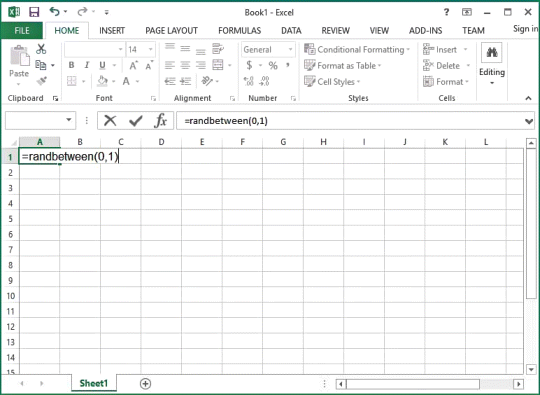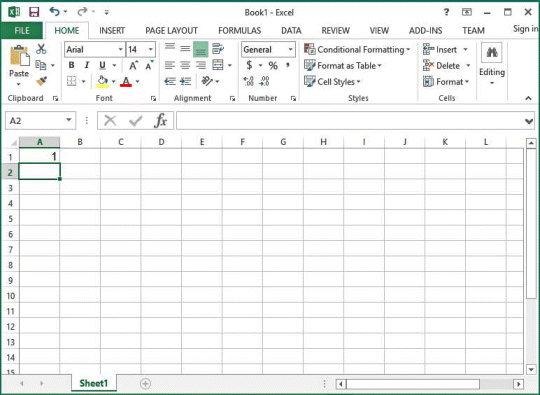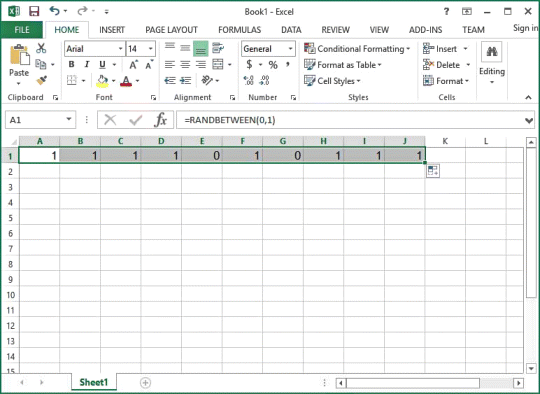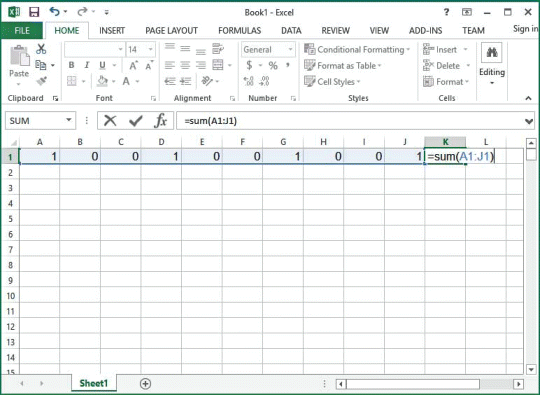BSimulating Statistical Scenarios
The type of simulation we will be doing is called Monte Carlo simulation—the use of random numbers to mimic realities involving chance. This appendix begins with step-by-step instructions and screenshots for constructing a basic statistical simulation in Excel. After that, it describes the nature of random variation evident in all simulations, then it overviews general guidelines for simulating statistical phenomena, and, finally, it gives specific instructions for reproducing the book's other statistical scenario simulations.
In cell A1 type = randbetween(0,1) then press Enter key on keyboard.

You will now see either a 0 or a 1 in cell A1.
Press the function key F9 several times and you will see the value change like flipping a coin.

Copy A1 to B1 through J1 (B1:J1).
This will give you 10 coin flips in a row.

In cell K1 type = sum(A1:J1), then press Enter. This will give you the head count.
Press the function key F9 several times just to see what happens.

Copy cells A1:K1 down through row 1000.
This will give you 1000 independent repetitions ...
Get Illuminating Statistical Analysis Using Scenarios and Simulations now with the O’Reilly learning platform.
O’Reilly members experience books, live events, courses curated by job role, and more from O’Reilly and nearly 200 top publishers.

